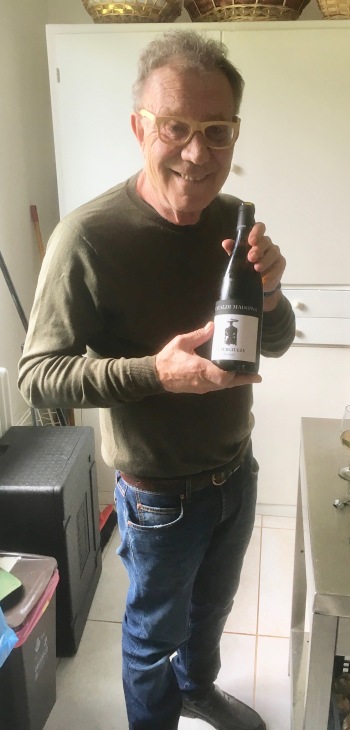Norma Gastronomia Siciliana in Manhattan is a restaurant that I frequent because of the great food and warm atmosphere. 
I have probably tried everything on the menu and friends often ask me to recommend my favorite dishes. These are some, though not all, of the foods that I often enjoy.
Caponata con crostini e mandorle–Eggplant, celery, green olives, onions, tomato, sweet and savory seasoning, toasted almonds served with crostini.
I like to have the Caponata with the focaccia, hot from the pizza oven.
Panelle– Fried chickpea fritters with garlic and parsley aglio olio sauce. Arancini al Ragu –Saffron rice ball stuffed with Bolognese meat sauce, green peas and served over tomato sauce.
Arancini al Ragu –Saffron rice ball stuffed with Bolognese meat sauce, green peas and served over tomato sauce.
Rianata pizza — Sicilian style with garlic, tomatoes, herbs and anchovies.

Cabucci Porchetta — hot flatbread sandwich with roasted porchetta, arugula, provolone cheese, and herbs.
Timballo di melanzane alla parmigiana- Eggplant parmigiana timbale with mozzarella & parmigiana cheese, basil and tomato sauce.

Pasta Alla Norma — Imported durum paccheri from Gragnano, large tubular pasta with a sauce of fresh tomatoes, eggplant, basil and ricotta salata cheese.
Anelletti Alla Palermitana in Casseruola – Tiny ring shaped baked pasta baked in a casserole with beef & pork ragu, green peas, Italian ham, eggplant, primo sale and ricotta salata cheeses, and basil
Cannoli – House made cannoli filled with sheep milk ricotta and pistachios.
Almond Semifreddo with Chocolate Sauce
Cassata — Sicilian cheesecake
Champagne Egly Ouriet 1990 made from 75% Pinot Noir and 25% Chardonnay from 100% Grand Cru Ambonnay from 50 plus year old vines. Vinification in barrels 25% new. Aged for 8 years on the lees.
Champagne Henriot “Millésime 1988 made from Pinot Noir and Chardonnay from 6 Grand Crus: Maily Champagne, Verzy, Verzenay on Montagne de Reims, Mesnil-su-Oger, Avize, Chouilly on Côte des Blancs. The wine has hints of raspberries and strawberries with a touch of hazelnuts and brioche and a long finish.
Trebbiano d’Abruzzo 2003 DOC made from 100% Trebbiano d’ Abruzzo Edoardo Valentini very complex and full with a mineral character, hints of citrus fruit and apple, melon, good acidity, great finish and aftertaste with that extra something that is difficult to describe. The wine was not showing any sings of age.
Cerasuolo d’Abruzzo 2014 DOC made from 100% Montepulciano d’ Abruzzo Edoardo Valentini aged in large botti of Slavonia oak for 12 months. With very nice fruit aromas and flavors, a note of strawberry and for a rose’, a great finish and aftertaste. There was some wine left in the bottle and I had it 3 days later. The wine was still in perfect condition.
Prephylloxera Etna Rosso 2006 DOC Township of Randazzo from the Don Peppino Vineyard. Made from Nerello Mascalese and Nerello Cappuccio. Right in front and to the right of the cellar in the Calderara Sottana vineyard are two parcels in the midst of the larger vineyards that have survived phylloxera. They are over 130 years old and stand on their own rootstock. Exposure is northern and the soil is black volcanic pumice with some ash. There is spontaneous malolactic fermentation and aging in French oak barriques and tonneaux for 18 months.





























